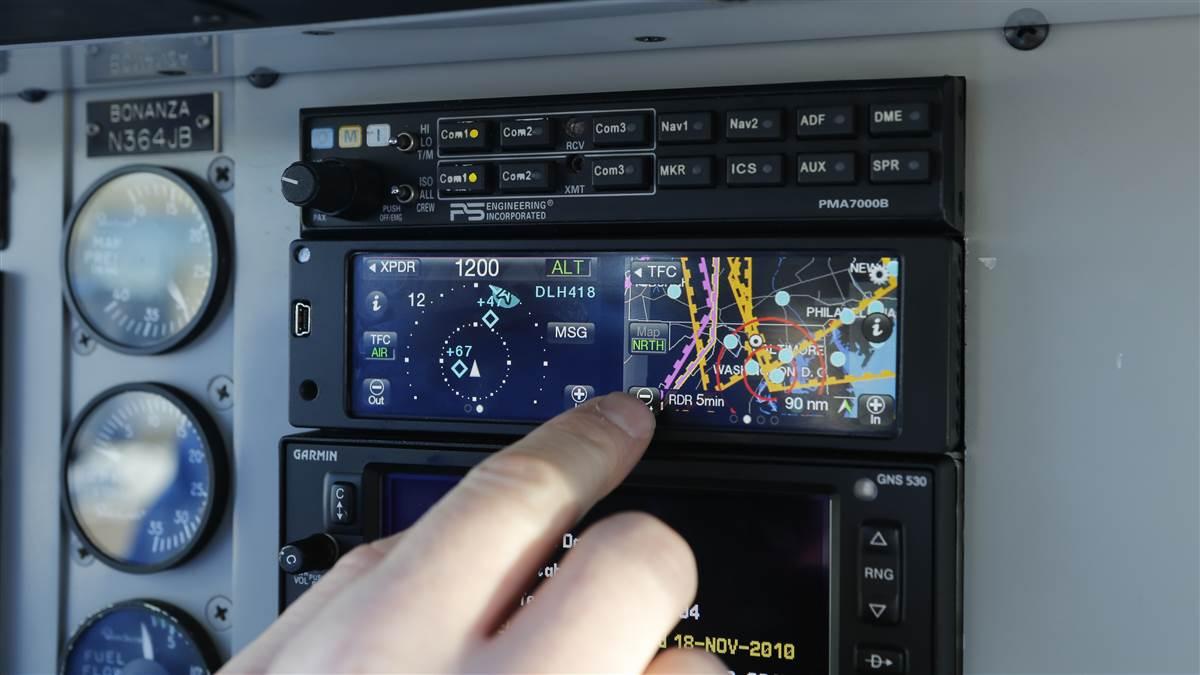Do you want $500?
Last chance for FAA’s ADS-B rebate
The FAA’s yearlong $500 Automatic Dependent Surveillance-Broadcast (ADS-B) rebate program is in its final days. The last day to reserve a rebate is Monday, Sept. 18. And as of Sept. 4, fewer than half of the 20,000 available rebates have been reserved. “Why?” you're probably asking, followed by, “Is it too late to apply for a rebate?”

ADS-B uses GPS satellites instead of ground-based radar to determine aircraft location, and is a key technology behind the FAA’s Next Generation Air Traffic Control System. The FAA has mandated ADS-B Out equipage after Jan. 1, 2020, for flight in airspace where a transponder is required today.
And the answer is, no—it’s not too late to apply.
Claiming a rebate is a five-step process.
Here’s what you need to know if you want to slip in under the wire:
Go to the FAA’s rebate website and reserve a rebate. The site will ask you to select the equipment you plan to install. Not sure what hardware is best for you? No worries, the selection is not binding; choose anything, and if you install qualifying, TSO'ed ADS-B Out hardware you will be eligible for the rebate.
When you reserve a rebate, you must provide a scheduled installation date that can be no more than 90 days away. Choose the latest date possible—like the equipment selection, this really isn’t binding, either. When the scheduled installation date arrives, a second, 60-day clock begins ticking for installation of the equipment and successful completion of the required performance validation flight. So if you reserve a rebate on Sept. 18, selecting an installation date the maximum 90 days out, you actually have 150 days—until Feb. 15, 2018—to pass the validation flight and claim your rebate.
The website will provide a rebate reservation code. Hold on to that.
Once your hardware is installed, rebate rules require a validation flight of at least 30 minutes in 14 CFR 91.225 rule airspace, which is where ADS-B Out is required after Jan. 1, 2020. Generally speaking, this is above 10,000 feet; in or above Class C airspace; or within the 30-nautical-mile Mode C veil around a Class B airport. Landing at a Class B or Class C airport is not required. Ten aggregate minutes of maneuvering flight is needed, but a couple of 360-degree turns—when combined with normal climbs, descents, and the traffic pattern—will fulfill the requirement.
After completing the flight, go back to the FAA rebate site and click on the “Fly and Validate” tab. You’ll receive a Public ADS-B Performance Report (PAPR); if your aircraft passes—no red boxes allowed—you’ll also receive a GA Incentive Requirement Status (GAIRS) Report that includes your incentive code.
To complete the rebate process, within 60 days of the installation date you scheduled in the FAA system, log into the FAA website and enter both your rebate reservation code and your incentive code. Most owners report receiving their rebate check within a week.
The rebate program, announced on June 6, 2016, went live on Sept. 19 that year. It’s open to owners of single-engine, piston-powered airplanes who install TSO'ed ADS-B Out equipment. Why is the program winding down with money left on the table? “The rebate program was designed to help pilots and draw attention to the rule,” said Rune Duke, AOPA director of airspace and air traffic. “However, the program had technical and operational limitations that discouraged pilots from applying.”
First, he said, some owners felt that the rebate amount was too small. “The cost to comply, with the validation flights, negates some of the benefits of participation—we’ve had a lot of complaints about that,” Duke said. Some aircraft owners were penalized by technical issues, he added, and the fact that the rebate was taxable discouraged others.
But the validation flight might have been the biggest challenge. “The requirement that validation flights need to be made in rule airspace has been a sticking point. For many pilots, flying into rule airspace is a hardship, and can consume the value of the $500 rebate,” he said.
The rebate did a great job of increasing general aviation pilots’ awareness of the ADS-B mandate, Duke added. “It initiated a lot more conversations around ADS-B, which we think was very important as we approach the mandate.”



